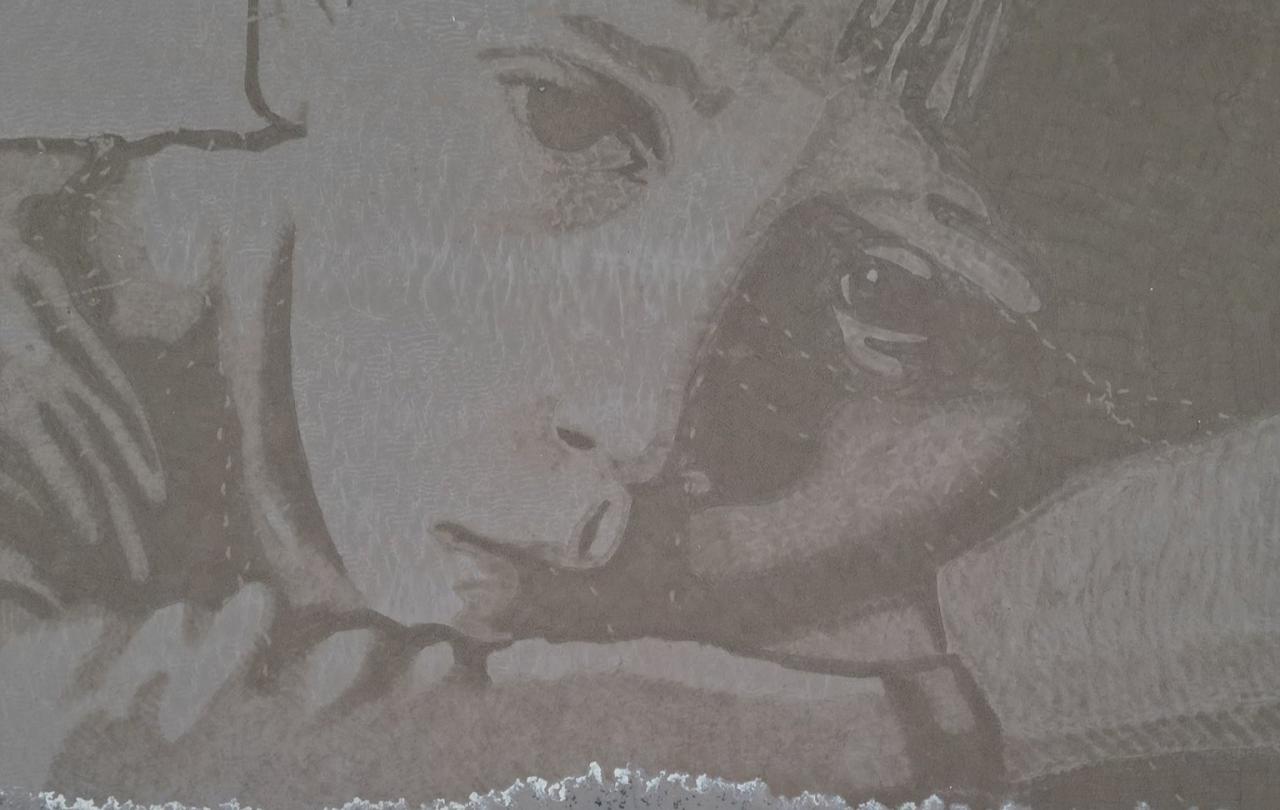
Nothing rivets our attention more than a family drama played out in public. Currently we are fascinated, either avidly or guiltily, by the tensions surrounding Harry’s attendance and Meghan’s absence at the coronation of King Charles III.
Monarchy is popular and comprehensible in a way that law, finance, mercantile logistics and military strategy are not, just because it involves real persons and their relationships. This translates great matters of state into terms which resonate with the ordinary person - however terrible, besides consoling, those matters may turn out to be.
Yet for many of the more formally educated this is not right at all. We should not be confusing the private with the public, the intimate with the objectively open.
Familiarity, and still more the familial, is thought to contaminate the ethical.
Fairness is, today, supposed to require a lack of association with the parties involved, such that increasingly the interviewers of a candidate for a job are not allowed to have any previous knowledge about her. Familiarity, and still more the familial, is thought to contaminate the ethical, which suggests that ideally appointments should be made by artificial intelligence and all judgements be systematically computed.
Already our individual assessments are no longer trusted, along with the quirkiness of intuition and all tacit knowledge acquired by direct acquaintance. Instead, we are expected to act as much like robots as possible and to reach verdicts only by box-ticking according to pre-assigned criteria.
For such an outlook, monarchy is a supreme anomaly: the subversion of public process by private whim rendered hereditary. It surely enthrones not just a man but corruption and forms the capstone for the continuing operation of a decadent inherited establishment.
Yet there is another way of looking at all this. Is it any accident that King Charles, who has not arrived at his position by following due process or pandering to the needs of faction and fashion, has consistently been able to argue for and to promote more serious long-term concerns of the common good than have most politicians? Our built environment, the stability of nature, the sustaining of craft-skills and the training in disciplined virtue of the young, whatever their class origins, all matter supremely, and yet it is the Crown and not Parliament that has been most freely able to point to these things and to do something about them.
Where do any of us first learn to obey, to share and to sacrifice, besides how to exercise our positive creative talents? Always within the bosom of the family, in whatever conventional or unconventional way this may be constituted.
More fundamentally, there are reasons to doubt the simple association of the private with interested corruption, and the publicly abstract and objective with ethical disinterest. Where do any of us first learn to obey, to share and to sacrifice, besides how to exercise our positive creative talents? Always within the bosom of the family, in whatever conventional or unconventional way this may be constituted. Moreover, within this bosom, rivalry and even competition are actually discouraged, even though they inevitably arise. Our parents want us to succeed, but not at the expense of our siblings. Self-expression and self-realisation are fostered rather than suppressed and yet they are not permitted to overrule cooperation.
Within the family we learn that nothing is possible for us alone and that we have a part to play in a greater whole. School expands this vision and yet to some degree it already undermines it. We are now openly and almost shockingly encouraged to compete and to outperform; the less successful children are effectively abandoned by their new surrogate parents. The Victorians deliberately tried to counteract this by encouraging also house and school loyalty and a genial competition in sports and debating with other schools and colleges.
Yet when we leave school and university and join a workplace of whatever kind this geniality starts to vanish, and the competition becomes more cut-throat. We now need to help undercut rival operations and even systematically to exploit our clients or customers. In consequence, evil gets ever more reduced to crime: we are allowed to do some pretty bad things so long as they stay within the rules and we, and above all our employers, stay out of jail.
Some of us will go on to become politicians or will have pursued that career from the outset. Now things get worse: in the international context even the rule of law becomes patchy and shaky. Even where the international rules are followed, it is understood that national self-interest prevails and is wholly legitimate. It would be beyond shocking for a parent to tell their children that they must pursue selfish family interests at school, and work to sustain that at the expense of all other people, by whatever means possible. It’s just such an attitude that defines the mafiosi or the camorra. And it would still be shocking for a businessperson to tell their employees that they must pursue profit at the expense of their own town or country, even if this is often what covertly pertains.
Yet a politician can readily get up and say that the interests of Britain or whatever other country come, for her, first and last. Even the claim to be fighting for freedom and democracy (or some such) cannot survive if it is seen to clash with the interests of the nation: despite everything Biden has had to concede to Trump on this one.
The very selfishness and ruthlessness that is excoriated at the domestic hearth is ultimately encouraged in the public citadel.
There thus results something that has perplexed me ever since I was a child. The very selfishness and ruthlessness that is excoriated at the domestic hearth is ultimately encouraged in the public citadel. Does this mean, as the French philosopher Henri Bergson suggested, that most ethics really exists just to ensure the solidarity and efficiency of a war-machine; that what we take to be ‘moral’ is little more than an ethnic survival mechanism?
Bergson accordingly suggested that real ethics must be global and universal. But as we are discovering today, that seems too abstract and unrooted for most people. We cannot really love everyone effectively and equally. That is why Augustine suggested instead an ‘order of love’ whereby we extend our love in ever-widening circles from the closest to the most far-off, while allowing that our sympathy with remote people has to take the form of some support for those who are truly close to them.
The only way, therefore, to counteract the tendency of morality to mutate into disguised crime the nearer one reaches the boundaries and the margin of society is to extend the familial principle, such that all are variously sisters and brothers, mothers and fathers, daughters and sons (as indeed we truly are as constituting a single race). At the same time, one big human family can only be an effective family if it is also a family of cooperating families – a vast extended family if you like, on a principle of covenanting cousinship.
The world religions, and especially the Christian religion, have exactly operated this principle of an extension of the familial across all borders which can alone ensure that ethical action is both immediate and real, and yet not the mask of a collective egoism. Beyond the merely political community, the Church like the family is all-inclusive in its purpose: it offers at once citizenship, educational formation, reconciling process and collective cult, linking us to the divine.
At the most ultimate boundary of the human race it can also ensure that humans respect other natural creatures. And at the most ultimate boundary of all, that of finite reality as such, it can ensure that the principle that reigns is not mere utility or survival but our love of God who is in himself inner loving relation.
The aim of the ethical as love is itself relational connection and it is only the latter that puts a break on our worst instincts which we cannot always for ourselves override.
Such covenanting cousinship, or dividing only in order to link, always puts relationality at the centre, instead of mere self or collectivity. The aim of the ethical as love is itself relational connection and it is only the latter that puts a break on our worst instincts which we cannot always for ourselves override. Family members check each other, as do citizens, and as also should corporate bodies, if they seek finally organic cooperation rather than unlimited competition.
It not only should be but also actually is the same with nations. As the German philosopher Friedrich Schelling declared, it is in the end nations interacting with other nations that put a brake on tyranny arising within nations -- something that no mere constitution or inner balance of power can curb forever. For a nation thinking of itself alone always risks descending into a shared ruthlessness that will typically be exercised both within and without.
The Church as an extended family is not a democracy but a ‘mixed constitution’ involving single headship, the wise advice of a few and the popular consent and modification of proffered norms by the many. From a Christian perspective a good social order, as familial, should echo this, and that is why constitutional monarchy would appear to be a suitable, though by no means the only possible form, for a Christian country to take.
An aristocracy ought in theory to be the opposite of a mafia: not the subordination of public interest to family but a particularly strong and sacrificial association of person and family with public interest
Its mixed constitution involves some role for ‘aristocracy’ or wise leadership in the widest sense. An aristocracy ought in theory to be the opposite of a mafia: not the subordination of public interest to family but a particularly strong and sacrificial association of person and family with public interest. This is one crucial and political way in which the familial principle of the order of love can be constituted and rendered real. Of course, today, what we have instead is rather the covert extension of the rule of the mafiosi as big moneyed crime undercuts law and even operates outside its sway altogether.
As a seeming anachronism, monarchy stands at the apex of the aristocracy and yet also transcends its concerns by a more direct linkage to the whole population, to whose attitudes and needs it needs to be especially alert. I have already mentioned just why and how King Charles performs this role effectively and in such a way as to counteract existing trends which more and more make a mockery of ordinary morality and decency, reducing it indeed to discipline for the mass troops, corralled into the service of armed power.
Charles instead continues to serve the religious (and not just Christian) principles of the extended familial, of the order of love and covenanted cousinship, upon which alone the survival of ethics depends. Not only is there no salvation outside the Church (thus understood) -- there can be no genuine moral life either.
For these reasons the coronation, which we eagerly await, will be indeed a truly Christian event and sacrament: an influx of grace in these unprecedentedly darkening times.





